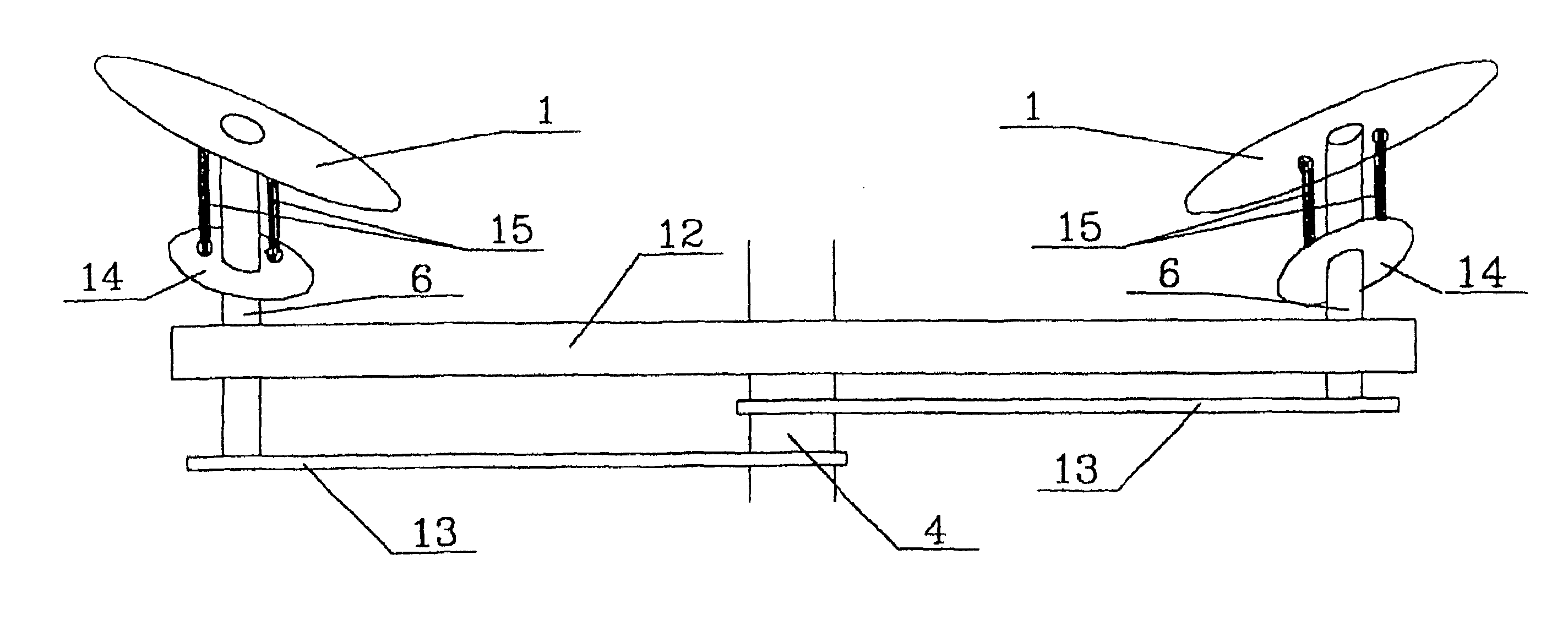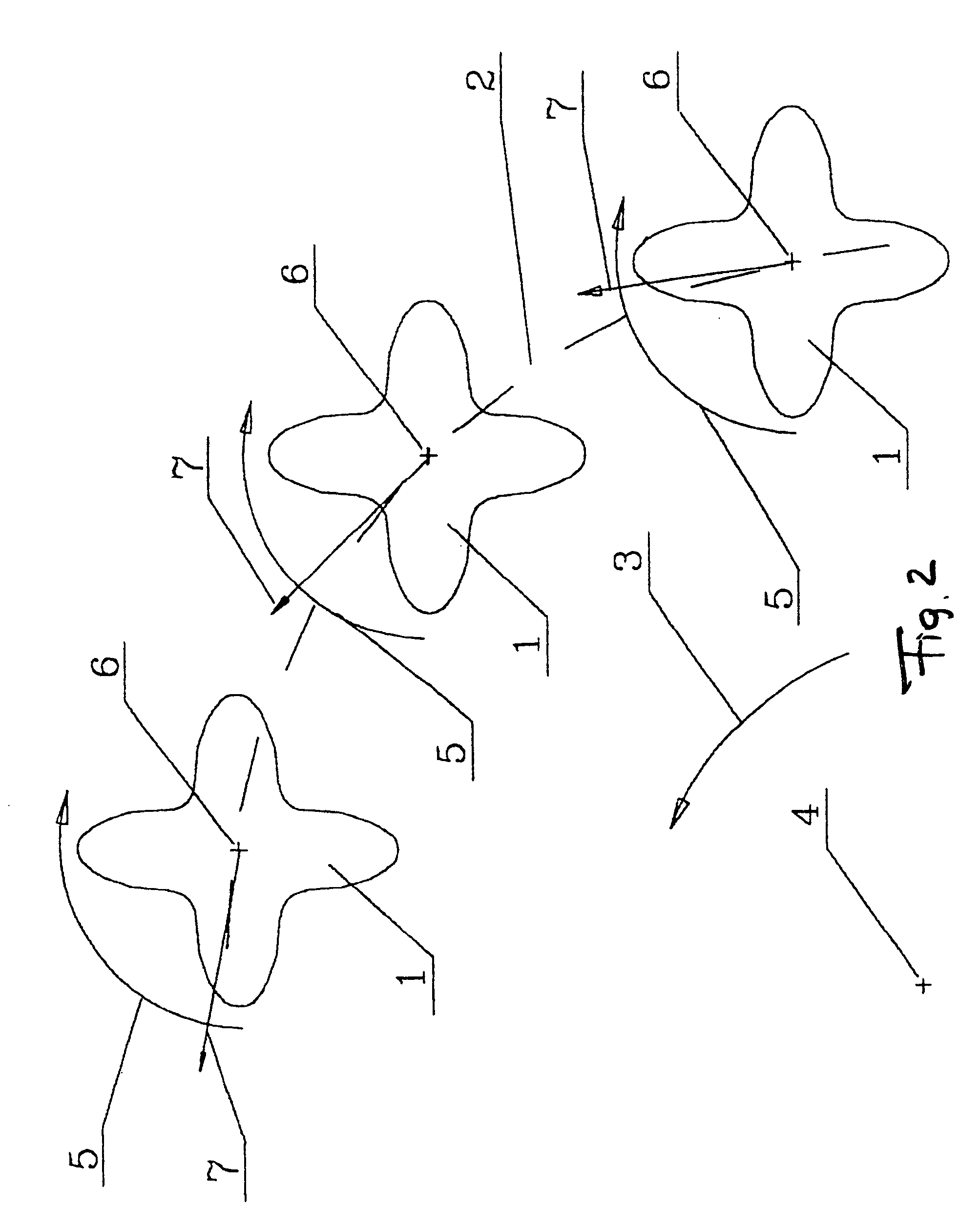Method for producing a lift and a horizontal thrust
a technology of lifting force and horizontal thrust, which is applied in the field of aerodynamics of flying apparatuses, can solve the problems of significantly reducing the efficiency of this method low efficiency of producing lifting force, so as to reduce the radius of circumference, reduce the speed, and reduce the effect of production efficiency
- Summary
- Abstract
- Description
- Claims
- Application Information
AI Technical Summary
Benefits of technology
Problems solved by technology
Method used
Image
Examples
Embodiment Construction
[0008]The rotation of each aerodynamic surface synchronously with the movement along a circumference in an opposite direction relative to the axis of rotation that is parallel to the axis of rotation along the circumference with angular speed equal to angular speed of the movement along the circumference, provides a rectilinear (without rotation) movement of the aerodynamic surface relative to air, which provides a production of a uniform distribution of the aerodynamic forces along an aerodynamic surface, leading to a high efficiency of production of the lifting force.
[0009]Performing of oscillations of each aerodynamic surface synchronously with their rotation relative to the mutually perpendicular axes, that are perpendicular to the axis of the movement of the aerodynamic surface along the circumference, provides simultaneously with the lifting force, the production of a horizontal thrust.
[0010]FIG. 1 shows a scheme of production of a rectilinear movement of aerodynamic surfaces;...
PUM
 Login to View More
Login to View More Abstract
Description
Claims
Application Information
 Login to View More
Login to View More - R&D
- Intellectual Property
- Life Sciences
- Materials
- Tech Scout
- Unparalleled Data Quality
- Higher Quality Content
- 60% Fewer Hallucinations
Browse by: Latest US Patents, China's latest patents, Technical Efficacy Thesaurus, Application Domain, Technology Topic, Popular Technical Reports.
© 2025 PatSnap. All rights reserved.Legal|Privacy policy|Modern Slavery Act Transparency Statement|Sitemap|About US| Contact US: help@patsnap.com



